Our preferred Slack alternative is Microsoft Teams, as its comprehensive features and third-party integration make it especially ideal for large businesses. Sign up for Microsoft Teams for free.
Slack is a cloud-based instant messaging app designed for the workplace with direct messaging, group messaging, transfer of files, and various other tools. It is widely regarded as one of the most popular and well-known business communication tools and an excellent alternative to an internal email.
Slack’s intuitive user interface, customization, and built-in privacy settings have made it the leader in the market. At the time of its launch in 2013, there were no formidable competitors in the realm of business messaging, but that has changed over the years.
The 5 Best Business Messaging Apps
We looked at some of the most popular business messaging apps used today and found Slack to be the ideal option for most companies. The following apps made it to our list:
- Slack – Best for Overall Versatility
- Microsoft Teams – Best for Large Businesses
- Zoho Cliq – Best for Businesses on a Budget
- Chanty – Best for Time-Saving Capabilities
- Twist – Best for Organization
Slack and Microsoft Teams were a close call in our comparison of top business messaging apps, but Slack came out on top. The following section makes a case for our second pick, Microsoft Teams.
Microsoft Teams – Best For Large Businesses
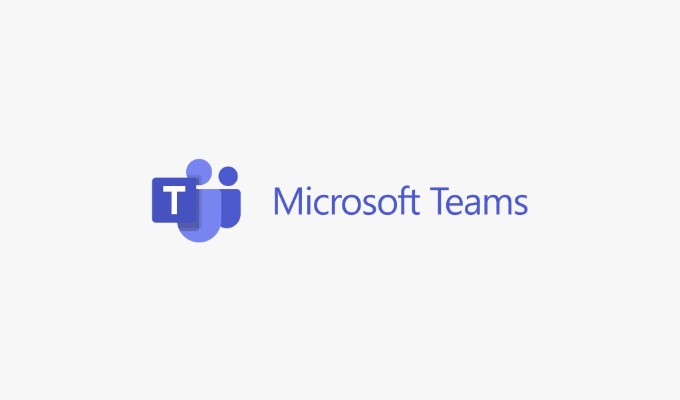
Microsoft Teams is a leading cloud-based communication and collaboration tool businesses use worldwide. Developed by Microsoft and launched in 2017, it includes messaging, voice calling, video calling, and screen sharing, among a ton of other features. Teams gained massive popularity and adoption during the COVID-19 pandemic when companies were forced to adapt to remote collaboration due to work-from-home policies.
It has an easy-to-use interface and includes many additional utilities like a calendar, integration with tools like Jira and GitHub, and integration with websites like Monday.com. Teams also has robust built-in security and privacy features that are essential for businesses with a large number of employees. This makes Microsoft Teams the ideal business communication platform for large companies and their unique requirements.
Teams is used by corporate offices and the tech sector and has also helped aid remote learning. Students and teachers have adapted to using Teams to communicate during the semester as classes in several institutions worldwide have shifted to online seminars. Microsoft Teams can be a handy way to manage communication in a variety of settings and is catching on in popularity.
How Microsoft Teams Compares to Slack

Microsoft Teams and Slack primarily cater to different market segments. Young tech-savvy companies tend to use Slack and larger organizations use Microsoft Teams. But it wasn’t always like this.
Slack was clearly dominant in the small business as well as enterprise market segments until a few years ago. However, with the advent of COVID-19 in 2019, Microsoft Teams usage surged beyond Slack. By the first half of 2020, Teams was reported to have over 75 million users. According to the latest numbers, Teams has over 270 million daily active users compared to Slack’s 18 million. This is a drastic change in usage trends.
Slack and Teams both have free basic versions with limited capabilities, but Microsoft Teams also comes included with Microsoft 365 Business plans. Slack gives you unlimited users and messages in its free plan, while Teams offers up to 500,000 users and unlimited messages. A key difference in the free plans is Slack’s limitation of searching through up to 10,000 archived messages while Teams lets you dig anything up from your entire chat history.
Chat capabilities and other basic features are quite similar in both software, such as channels/teams, unlimited messages, file sharing, video calls, and apps for both desktop and mobile devices. However, the two software have significant differences that may make one of them a better option for your business.
Slack has a better onboarding process and offers more freedom than Teams, making it attractive to startups and small businesses struggling with digitization. Slack also makes it easier to invite someone on a call. It also feels lighter and easier to get started with.
Microsoft Teams has a slightly steeper learning curve, but many companies find it a better option for the long term. While Slack integrates with Office 365, too, Teams, being a Microsoft product, offers a smoother experience. The way Teams integrates with Microsoft Azure AD makes it particularly powerful and reliable for large companies.
Microsoft Teams is included with Microsoft 365 Business plans, but a standalone Microsoft Teams Essentials plan is also available for $4 per user per month. Slack starts at $7.25 per user per month. Our extensive review of Microsoft Teams discusses its features and pricing in more detail.
Zoho Cliq – Best for Businesses on a Budget
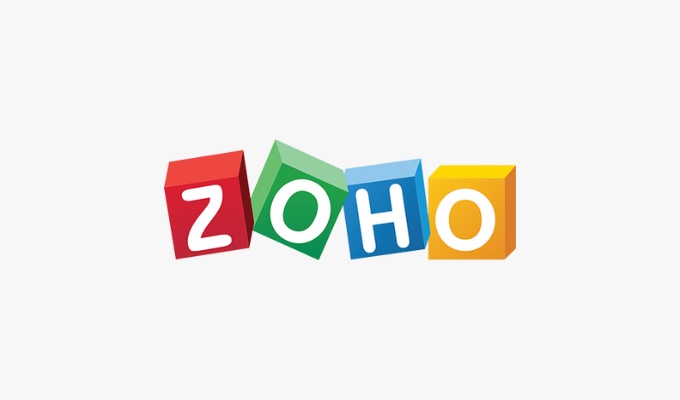
Zoho Cliq, also launched in 2017, is the streamlined and expanded version of the Zoho chat app. Cliq is a Slack-alternative team chat featuring integrations with Zoho CRM, Zoho People, Zoho Desk, and other tools by Zoho.
It includes direct messaging between individuals and groups, screen sharing, video calls, drag-and-drop file sharing, and various integrations. Its particularly impressive “fork” feature helps cut down on overlooked messages in channels and direct messages.
Zoho Cliq stands out from its competitors with its impressive free version. Cliq’s basic plan includes 100 GB of storage space, unlimited Video calls, and a host of other features businesses have to pay for in other apps. Zoho assures its users that Cliq will always remain free.
Google and Linkedin accounts can be used to log in to Cliq which makes it an even more accessible option for businesses with tighter budgets that don’t have their own internal email. Zoho Cliq’s budget-friendly paid version includes more advanced features and even an AI assistant named Zia.
How Zoho Cliq Compares to Slack

Zoho Cliq is a direct competitor of Slack. It’s most often recommended as a budget-friendly alternative to Slack for startups and small businesses. It’s particularly a preferred app among people who already use other business tools by Zoho, such as Zoho CRM, Zoho Books, and Zoho Desk, because of their seamless integrations with Cliq.
The free version of Cliq allows users to search 10,000 past messages. This can give small companies a larger search volume compared to the 90 days of message history that comes with the free version of Slack. Cliq’s free plan also includes SALM-based single sign-on, a feature that’s not even included in Slack’s Pro plan and only comes with the Business plan.
During our research, we came across reviews for Cliq where users have complained about how long it can take to set up the software, especially when it comes to onboarding new users. Other users found the UI to be confusing. A number of users also pointed out how slow and difficult the file-sharing feature can be. Finally, some users suggested using Cliq only if you’re using other Zoho apps because of how well the Zoho app suite works together.
While Zoho Cliq’s paid Unlimited plan does offer a bang for your buck, it lacks many features that businesses can benefit from. Budget is the only reason to choose Cliq over Slack.
Chanty – Best for Time-Saving Capabilities
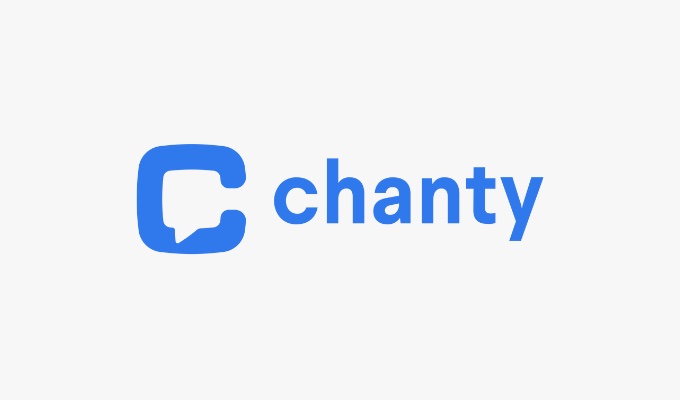
Chanty is a business messaging platform that focuses on tasks instead of chats, which is quite unlike its competitors. The focus on tasks allows businesses to save valuable time by limiting distractions in the chat interface. It uses AI bots to improve communication and collaboration and aims to streamline company operations.
The task button in Chanty features prominently in the top left corner of every conversation, keeping employees focused on the work at hand while they communicate. The app is especially geared toward software development, website building, and product development. It groups users into teams, with each team being assigned a different task.
How Chanty Compares to Slack
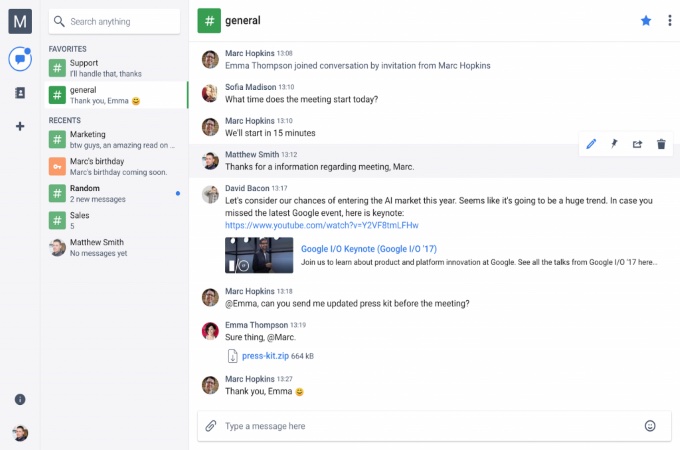
Chanty picks the most valuable features from Slack and other apps to create a platform that maximizes productivity. The app drops complex and confusing features that can overwhelm users on other platforms without contributing much.
Chanty’s free version supports up to 10 people and gives unlimited searchable history. The paid version costs less than Slack’s paid plans and includes a range of team management features.
Chanty is best for workplaces where tasks are more important than meetings and conferences, such as software houses and engineering firms. However, it’s not the best app out there for processes that require constant coordination among team members, such as marketing and CRM.
Twist – Best for Organization
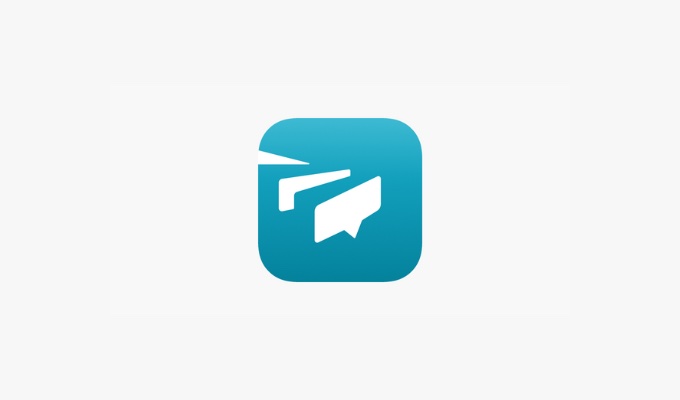
Twist is a blend of email and business messaging featuring the best features of the two. Twist uses channels and threads that make information easily accessible for users later on.
The hallmark feature of Twist is what it calls “async messaging”. The platform actively encourages team members to respond to messages whenever they see fit. It also ensures that important information doesn’t get buried and discussions stay on topic. Users that are away from the keyboard don’t miss out and can contribute to conversations at their own convenience.
How Twist Compares to Slack
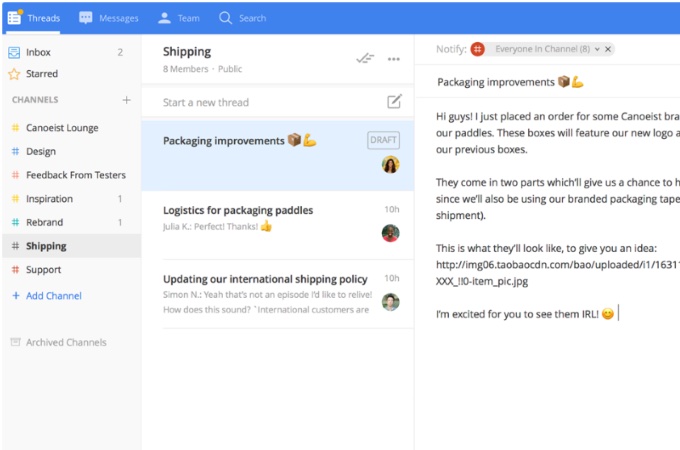
Twist is highly focused on threads, a feature more common in email clients and forums than business messaging apps. Threads allow users to access critical information without keeping the chat open. The feature also makes it easy for users to communicate at their own pace compared to the ASAP workflow encouraged by Slack.
Twist also has a unique notification system that allows users to mark conversations as “done.” This ensures users don’t miss out on threads with information meant for them.
Async messaging is a twist on conventional business messaging apps that can improve communication in small, closely collaborating teams. It’s less ideal for larger businesses and workplaces where productivity rather than the organization is a priority.
